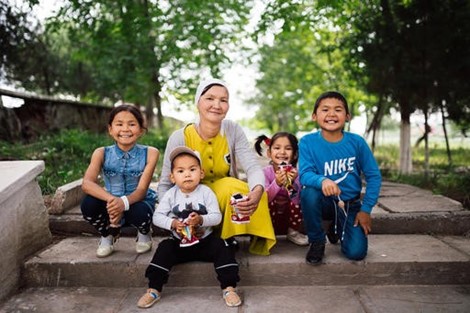
Childhood overweight is a condition that increases the risk of diet-related noncommunicable diseases later in life. It has been prompted by industry marketing, greater access to processed foods, and inadequate physical activity levels. That is why it has been included in the SDG indicator framework as an important indicator of child malnutrition under SDG 2 (indicator 2.2.2.a).
Prevalence of overweight is the weight for height >+2 standard deviation from the median of the World Health Organization (WHO) Child Growth Standards among children under five years of age. In 2022, overweight affected 37 million children under age five worldwide, or 5.6 per cent. The prevalence is higher, at 7.1 per cent in Europe and Central Asia, representing 3.7 million children under 5, 10 per cent of all overweight children worldwide.22 The proportion varies greatly, the highest in Greece (15 per cent) and lowest in the Republic of Moldova (3 per cent) (Figure 7).
22 UNICEF, WHO, World Bank: Joint Child Malnutrition Estimates (JME) – 2023 edition interactive dashboard.
There are, however, several observations that point to limitations in actual data availability on this important SDG indicator and call for action. First, the estimates are available for only 33 countries (59 per cent) in the UNECE region and 31 countries in UNICEF's Europe and Central Asia region. That means these countries have data for at least one year between 1990 and 2022, which was used to generate annual modelled estimates for official SDG reporting. The remaining countries do not have any data point on overweight among young children included in the global database used for SDG monitoring.23
23 UNICEF, WHO, World Bank Group. Joint child malnutrition estimates, 2023 edition.
Second, for many of the 33 countries with estimates included in the SDG database, the data are very sparse and old. The estimates for countries with at least one data point are all modelled in the SDG database, with the aim of providing annual estimates and a harmonized trendline for all countries, given sparse data. According to the Joint Mortality Estimates database of UNICEF, WHO, and the World Bank24, which is the basis of the SDG data for this indicator, only 18 of 33 have at least one data point on the indicator since 2015, and only 11 (18 per cent) have one data point since 2018, that is the last five years. The countries are Georgia, Kyrgyzstan, Latvia, Lithuania, Montenegro, North Macedonia, Serbia, Turkmenistan, Türkiye, United States and Uzbekistan. Except for Lithuania (surveillance data), all other countries’ sources are surveys (Multiple Indicator Cluster Surveys for seven countries).
24 UNICEF, Database on Child Malnutrition
Prevention of all forms of malnutrition (including wasting and overweight) is achieved through ensuring adequate maternal nutrition before and during pregnancy and lactation; optimal breastfeeding in the first two years of life; nutritious, diverse and safe foods in early childhood; and a healthy environment, including access to basic health, water, hygiene and sanitation services and opportunities for safe physical activity. All these necessary inputs for good nutrition are vulnerable to the changes wrought by conflict, climate change and the lingering effects of the Covid-19 pandemic. Coordinated actions are needed across nutrition, health and social protection sectors – especially in countries most affected – to reduce child malnutrition, while data collection and analysis should be an integral part of these efforts. The nutrition situation of children should be monitored for all ages, both at the national and disaggregated levels, if the countries and international community are to deliver on the promise to fight child malnutrition while leaving no one behind in this endeavour.